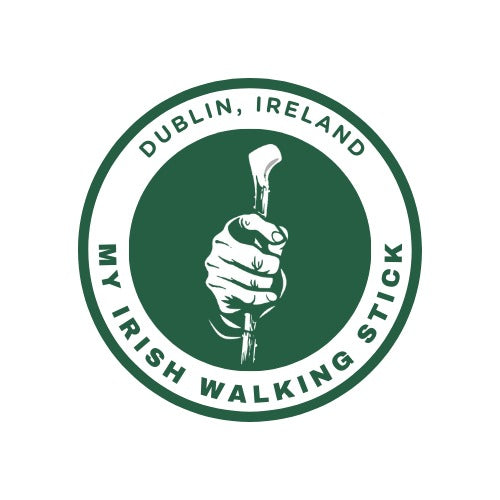A Stick That Could Do Damage
The blackthorn shillelagh is short, dense, and topped with a root knob handle—making it a natural bludgeon. In times when many Irish people were forbidden to carry swords or guns, the stick became the everyman’s weapon.
A walking stick in the hand wasn’t always for a limp. Sometimes it was insurance, sometimes a message.
Every Man Had One
In the 1700s and 1800s, the blackthorn stick was common in Irish homes—not as a novelty, but as part of daily life. Men took them to markets, weddings, and long walks, not only to aid their step, but to guard against threats—real or imagined.
And because many were trained in Bataireacht, the martial art of stick fighting, they weren’t just waving them about. They knew what they were doing.
Blackthorn walking stick with comfortable Handle
A Weapon Hidden in Plain Sight
What made blackthorn feared wasn’t just what it could do—it was that it looked innocent. You couldn’t be arrested for carrying a stick. But if trouble came your way, blackthorn could make its point—fast.
Land disputes, road confrontations, and even political clashes were sometimes settled with a single swing of a seasoned shillelagh.
Fear Mixed with Folklore
In Irish mythology, blackthorn was often linked with protection—but also danger. It was said to ward off evil, but also to house spirits or fairies that shouldn’t be disturbed. You didn’t touch a blackthorn bush lightly—and you didn’t mess with a man who carried one.
To fear blackthorn was to respect it. It was the symbol of quiet power.

Blackthorn Walking Stick Grooved
From Feared to Honoured
Today, we don’t carry sticks for fighting—but the legacy remains. When you walk with a blackthorn cane, you’re walking with a story that includes resistance, protection, and pride.
It may not strike fear anymore, but it commands respect—and that’s something no plastic pole can offer.



